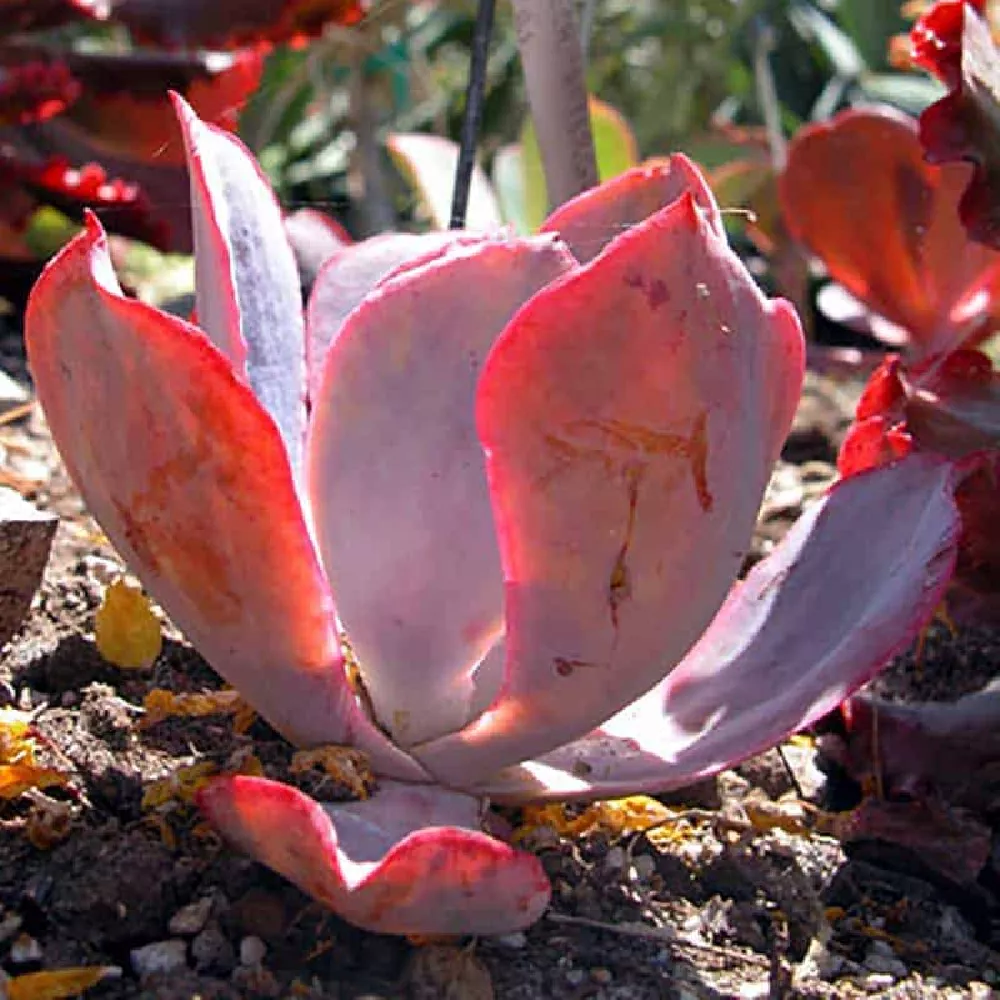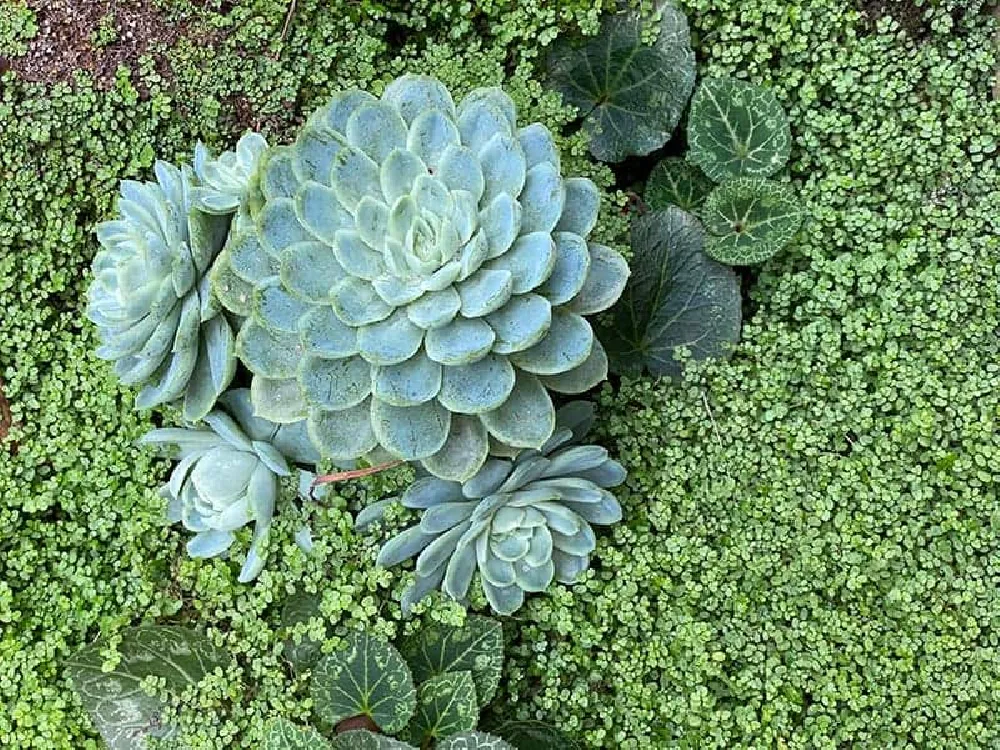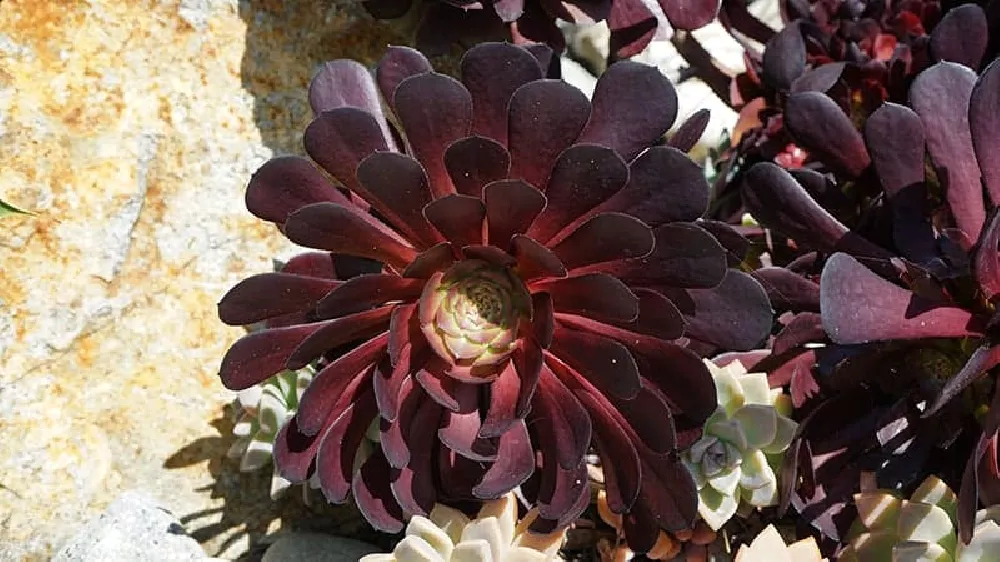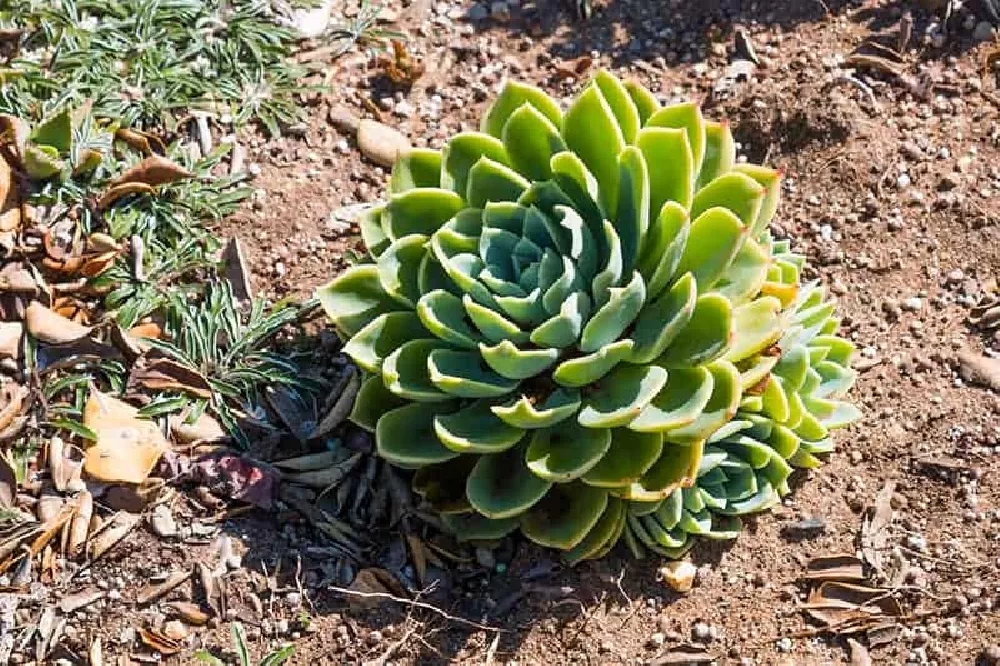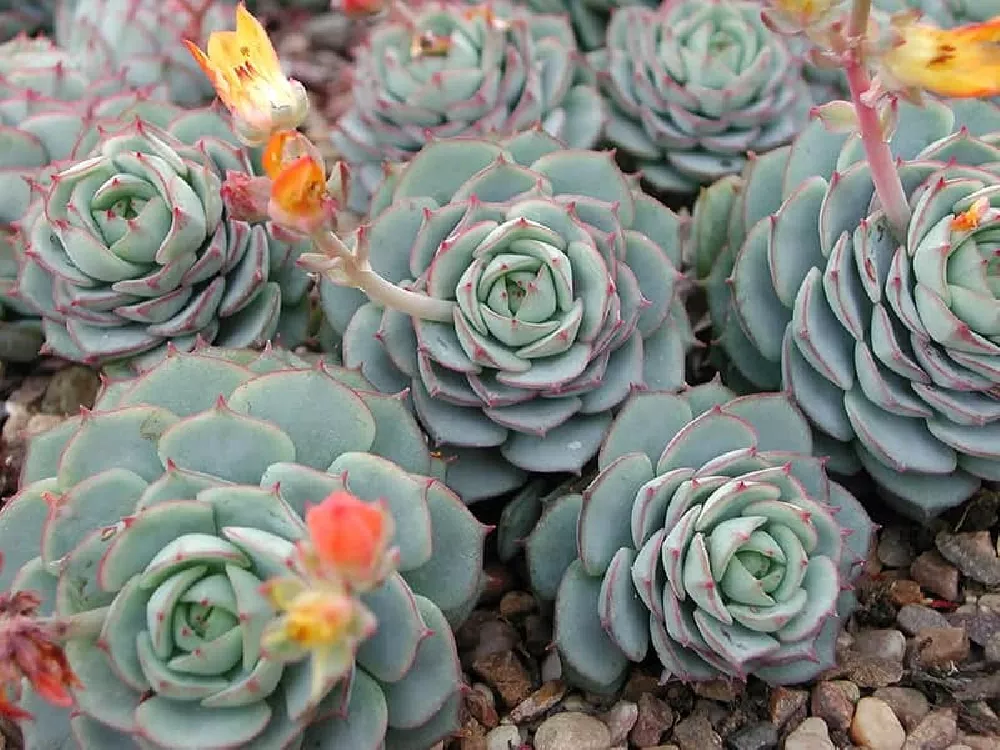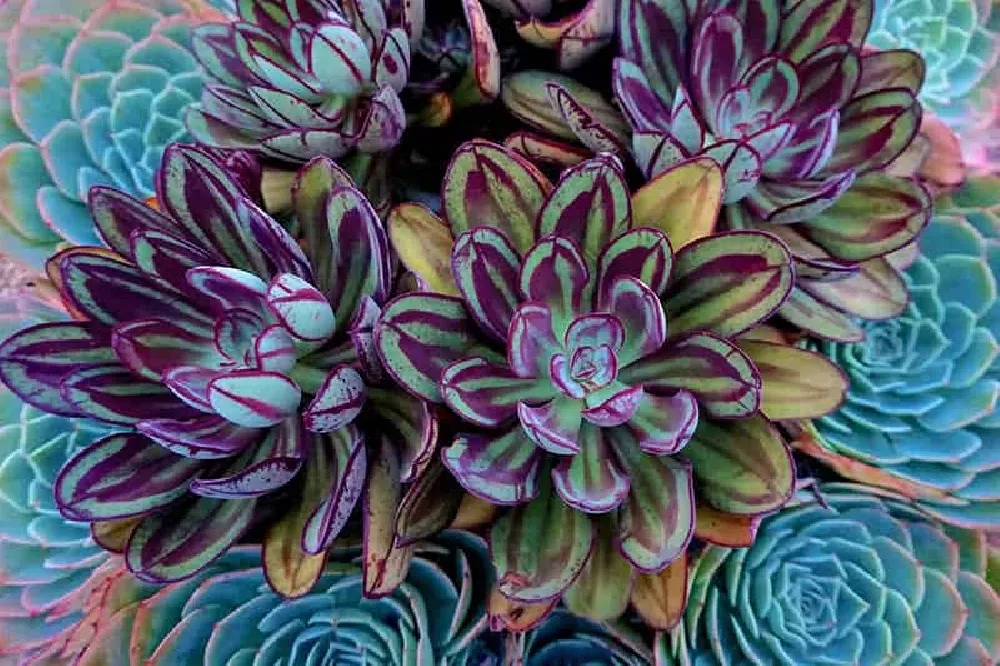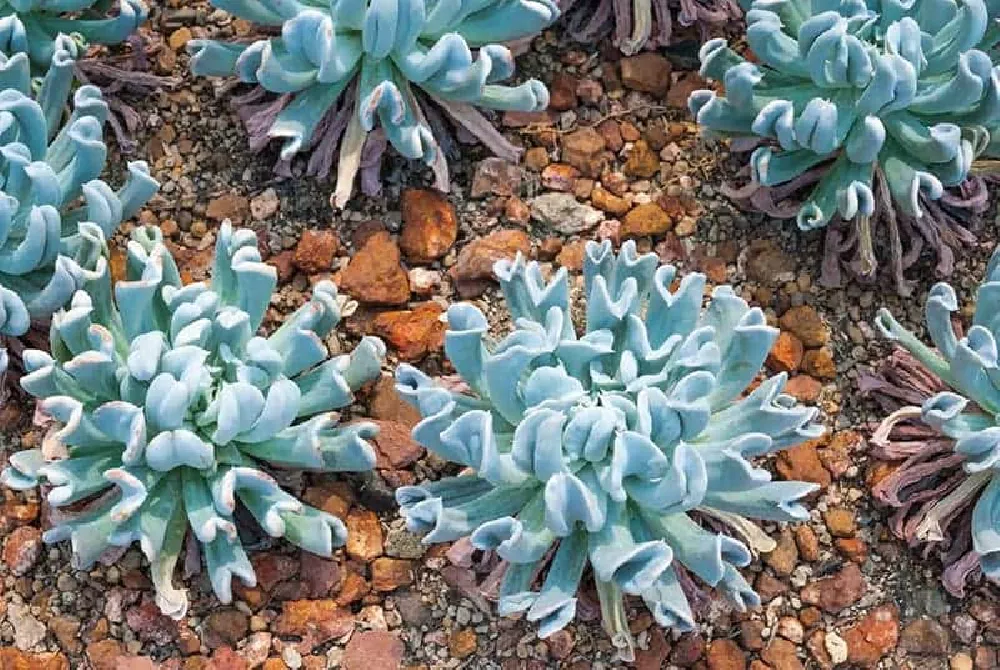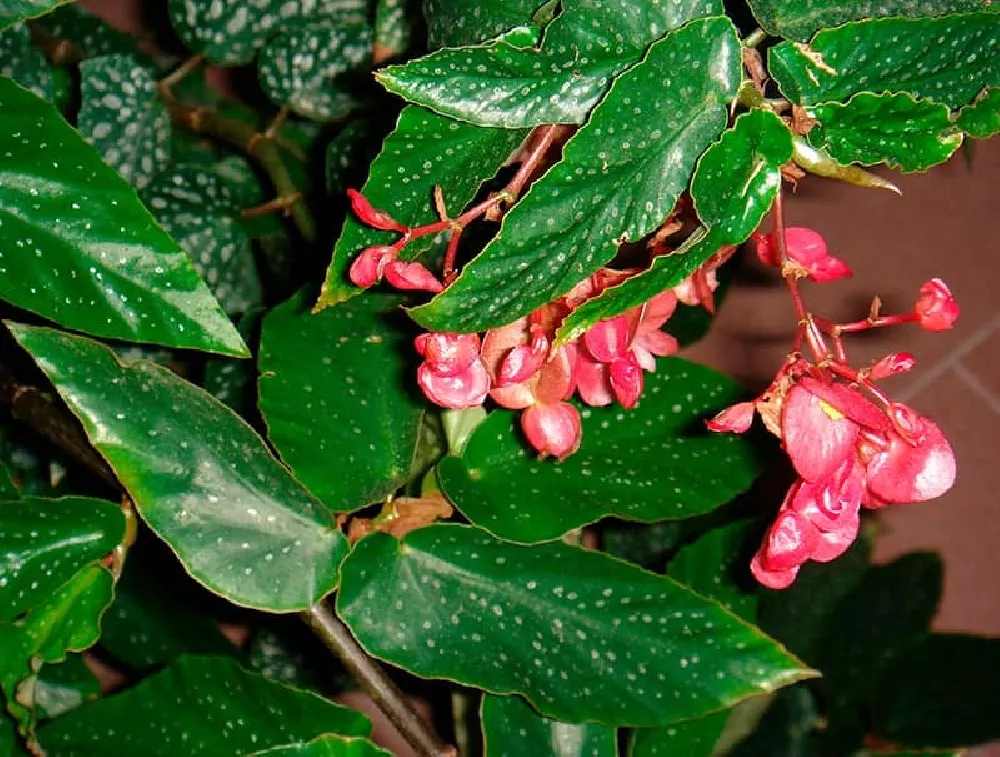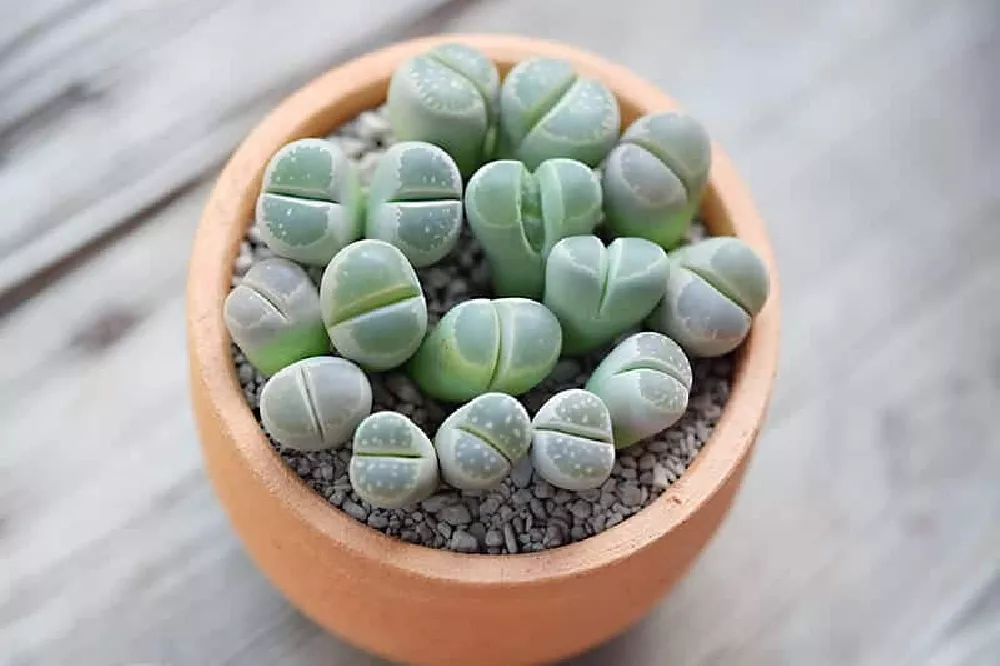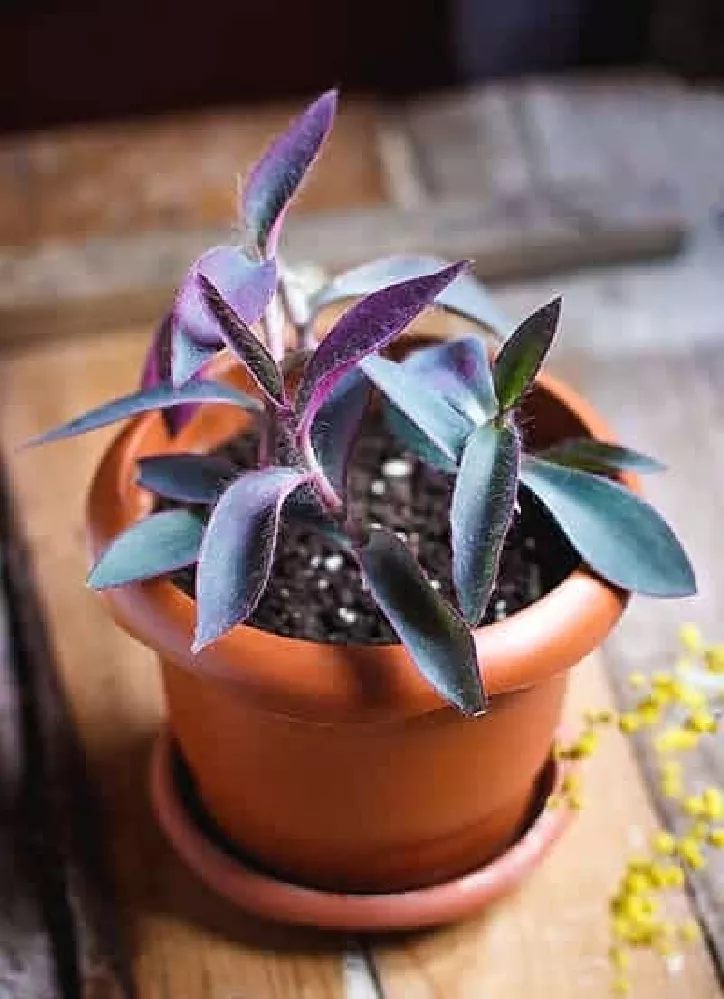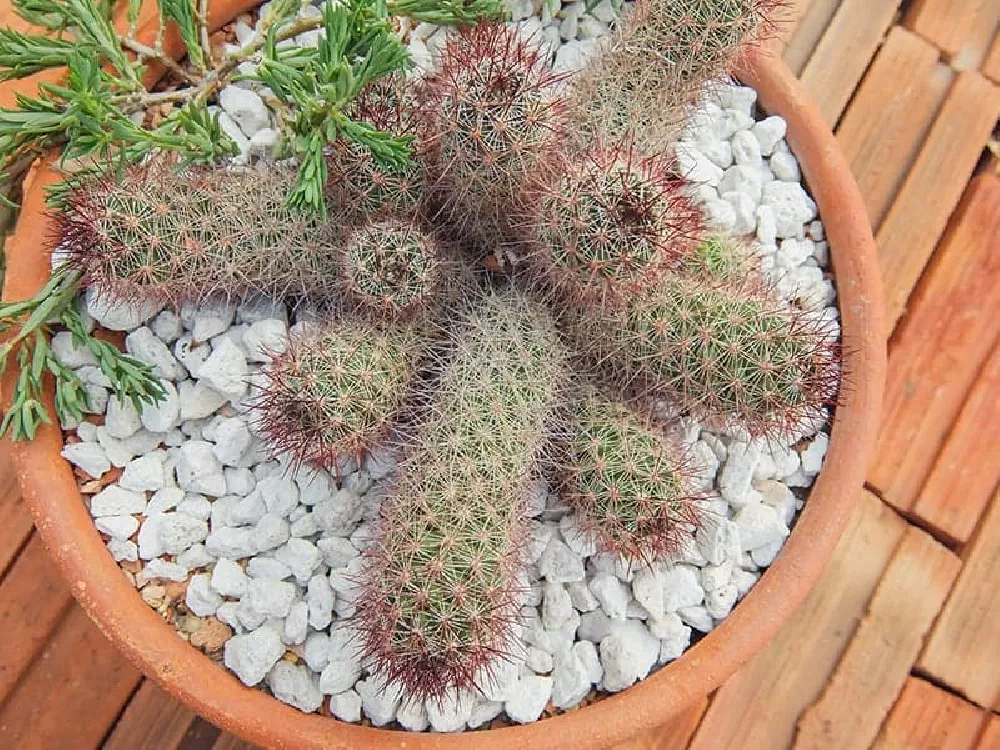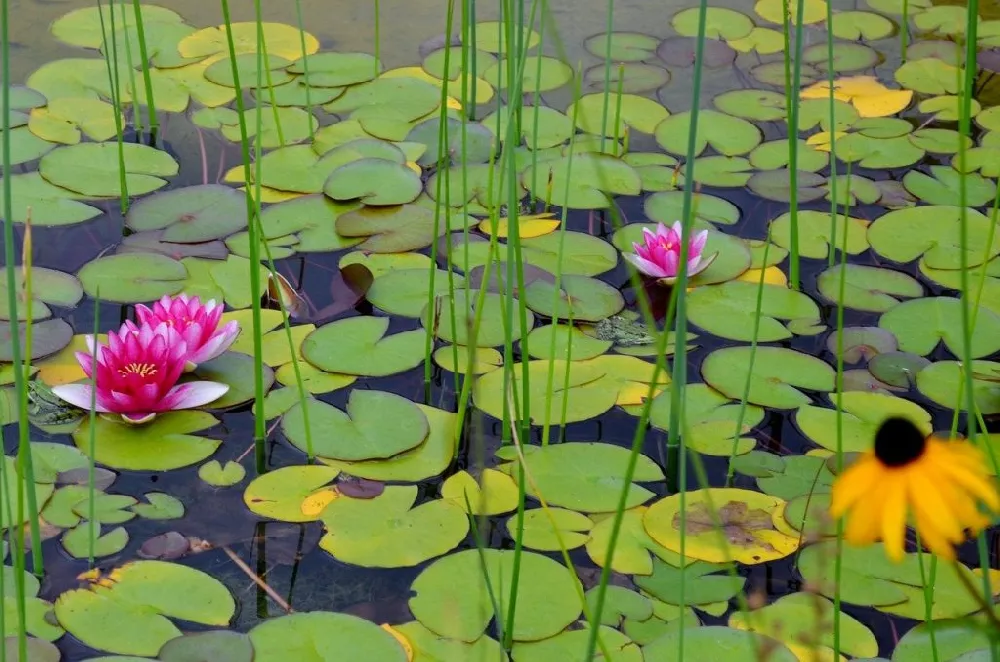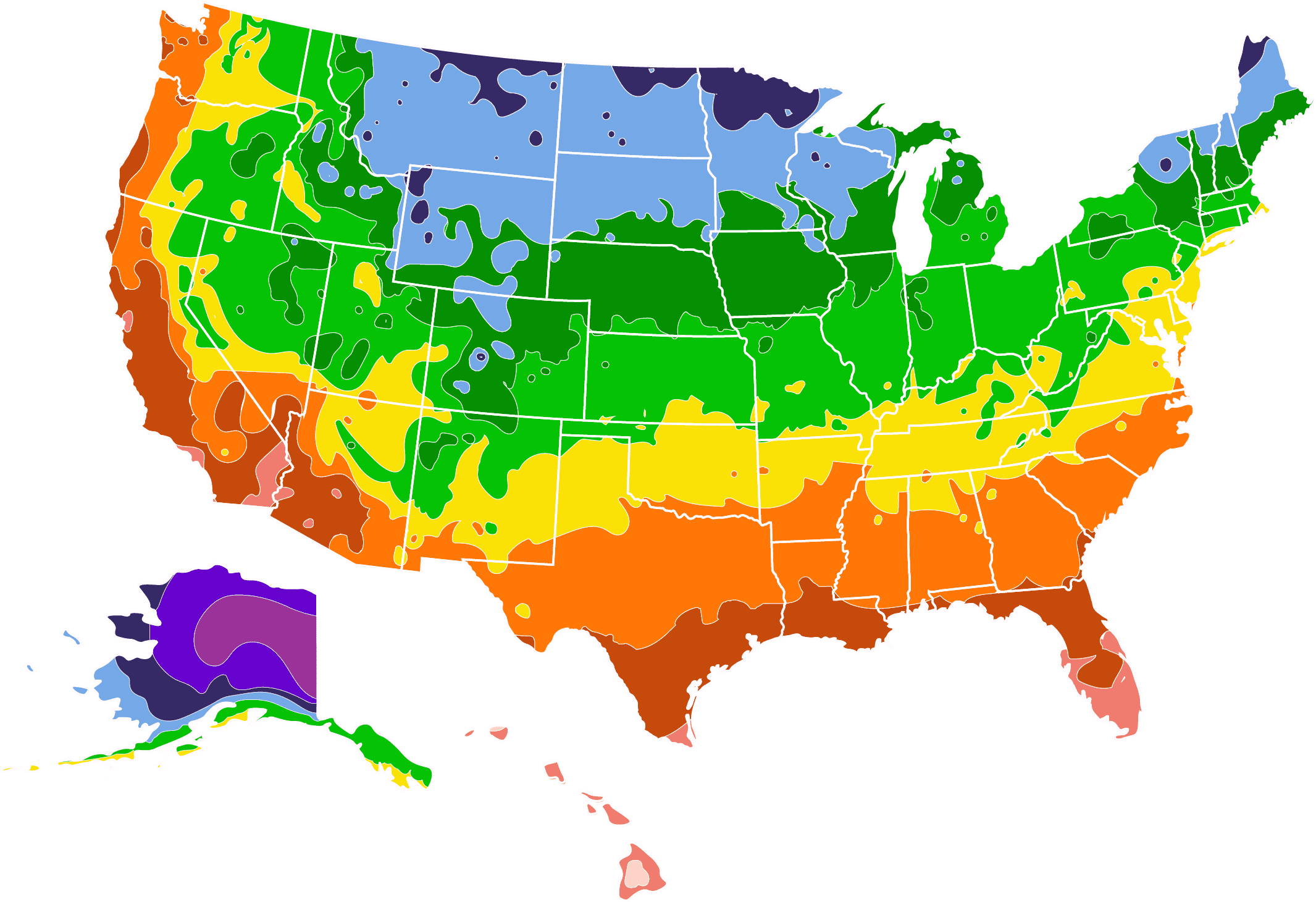- Home >
- Houseplants >
- Echeveria
There’s a lot to love about Echeveria. These small, attractive succulents couldn’t be easier to care for, and they reward the gardener with pretty rosettes and multi-colored flowers. Shop echeveria plants now to find out why they are such an attractive plant for the container or rock garden.
How to Plant Echeveria
Echeveria plants are native to the American Southwest and Central America, and they thrive in desert-like settings. Their fleshy leaves can hold in water to be used as needed, so they can go long periods without supplemental watering. Overwatering should be avoided with these small succulents.
If you live north of USDA Hardiness Zone 9, echeveria can easily be grown in a planter or pot. They make excellent houseplants, thriving in the sometimes-dry conditions of a house in winter. They should be planted in a well-draining, porous growing medium that allows water to filter through and drain out quickly. Potting mixes suitable for cacti are a good choice.
How to Grow Echeveria
- When. If you are planting outside, spring is the best time. Container-grown echeveria can be planted at any time.
- Where. Echeveria should be planted in a spot that gets at least partial sun four hours a day. They need soil that drains well and does not stay wet.
- How. For container-grown echeveria, place a layer of gravel or pebbles in the bottom of the pot, followed by soil that is formulated for succulents. Dig a hole that is slightly larger than the plant’s root ball, and place it in the hole. Backfill with soil. Tamp down and water thoroughly.
How to Care for Echeveria
- Watering and nutrients. Let your echeveria dry out between waterings, and keep the soil fairly dry. Water only when the soil is dry two inches below the surface.
- Pruning. Cut back flower stems after blooming, and remove any damaged or dead leaves when you see them.
- Pollination. Echeveria can be pollinated by hand or allowed to pollinate through the action of insects or other animals. The easiest way to get a new plant, however, is to pull off an offset (a smaller rosette that grows by the side of the main one) and plant it. It should grow on its own if the conditions are right.
